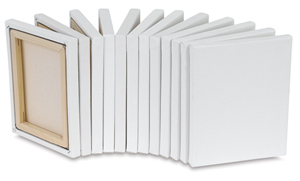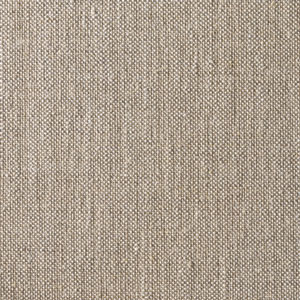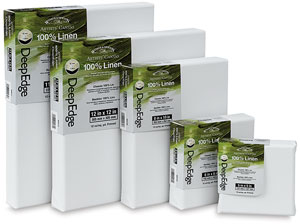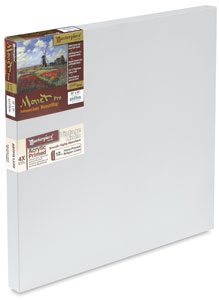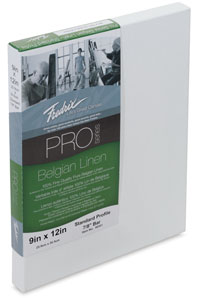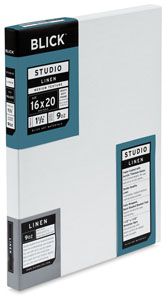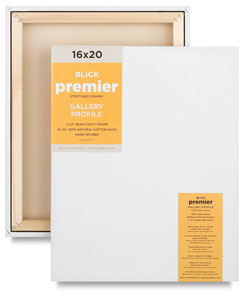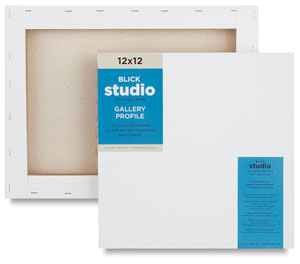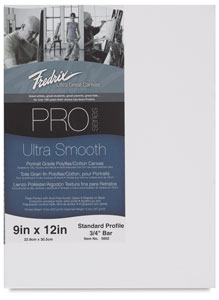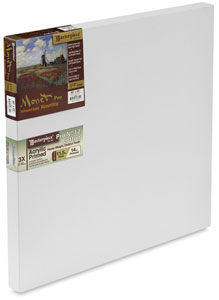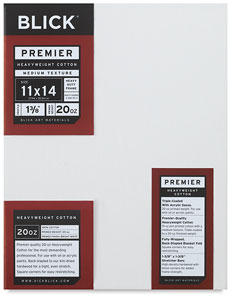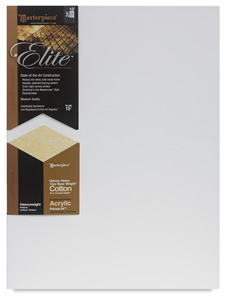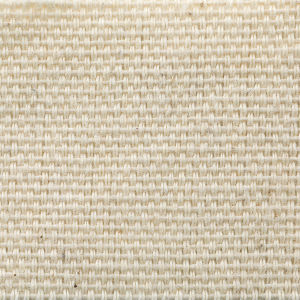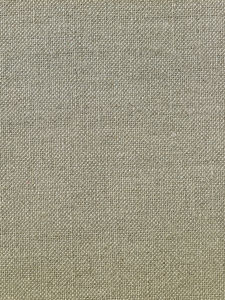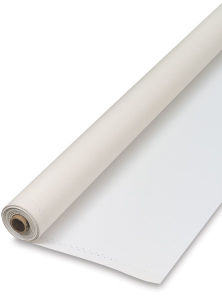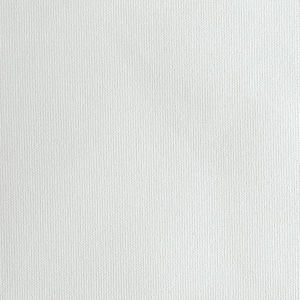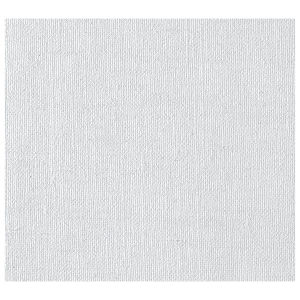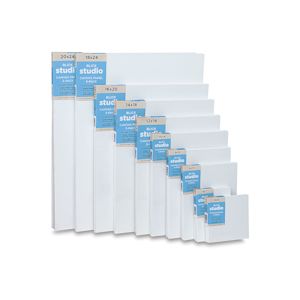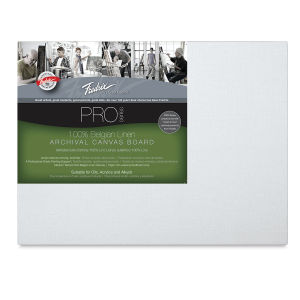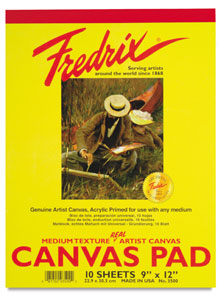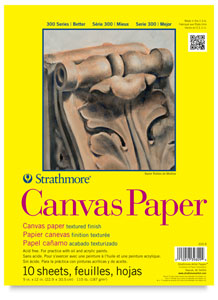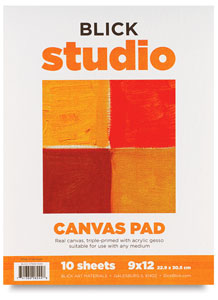Canvas for Acrylic Painting
Canvas for acrylic painting comes in a range of forms, from expensive stretched linen canvas to cheap canvas pads. In this article I'll tell you about the different types of canvas supports available for use with acrylics, so you can make an informed choice when you're ready to buy.
The versatility of acrylics means that you can choose from a wide range of painting surfaces (such as wood and paper), but canvas is the most popular. For more info on some of the other options, check out my Other Painting Surfaces for Acrylics page.
"Support" is an art term for any surface on which you apply paint or any kind of medium.
Canvas is a traditional support for painting, used for centuries by the masters, and it has endured in modern times as the support of choice. There are 2 main reasons why artists love to paint on canvas: its pleasing receptivity to the brush and its longevity. If you want to create a permanent artwork that will endure for centuries, you can't do any better. Hardwood panels have also been used traditionally to create permanent art, but canvas is much lighter and easier to transport. Canvas is also your best option if you want to create a very large painting.
The downside, of course, is that canvas can be very expensive. I hope to provide you with a clear overview so that you can select the best canvas for acrylic painting that is also gentle on your pocket.
Canvas is generally made from either linen or cotton, natural fibers that are woven together and then stretched over a frame or glued to a panel. Each fiber comes in different textures or weights.
The texture depends on the weave, so a finely woven canvas is smooth and best suited to small, detailed works. A rough texture is preferred by painters who like bold brushstrokes and larger paintings.
The weight is dependent on the thread density and is measured in ounces per yard. The higher the weight, the better the quality. Try to avoid canvases with weights lower than 8-10 oz.
Linen is the best of the best and expensive. If you care about permanence and don't mind paying for it, there is no better option if you want the best canvas for acrylic painting. On the other hand you can save some money by using a high-quality cotton duck canvas, which should weigh between 12-15 oz. It's cheaper than linen, but is still a suitable choice for permanent paintings.
Now, lets take a look at the four main ways you can use canvas as a painting surface: Stretched Canvas, Canvas Rolls, Canvas Panels, and Canvas Pads.
Canvas for acrylic painting is usually stretched over a wooden frame (called stretcher bars) and then primed with a gesso that creates a surface receptive to the paint. Unlike oils, acrylics will adhere to an unprimed canvas, but the colors may be somewhat dull compared to acrylics painted onto a primed canvas. Also, the texture of canvas will be more prominent on an unprimed canvas. You can buy pre-stretched ready-primed canvases in a variety of shapes and sizes for a reasonable price. (Even when you buy pre-primed canvas, I still recommend giving it a coat or two of gesso, for better absorbency.)
Unless you're particularly interested in stretching and priming your own canvas, I recommend that beginners choose the ready-made kind. I find it convenient (which leaves more time for painting) and depending on the quality I need, quite affordable. Just remember to look for canvases primed for acrylics and not oils (though some are primed for both).
Ready-made canvases can be purchased in different thicknesses, usually referred to as deep or traditional. Deep canvases (see photo on the left) have thick stretcher bars (such as 1.5” - 3” thick), while traditional canvases have thinner stretcher bars (such as .75” thick).
The main consideration with regards to thickness is how you (or your customer) want your canvas to look on the wall. If you envision that the finished painting will be framed, you should get a traditional (thinner) canvas. For an unframed painting you can choose any thickness, depending on how far you want the artwork to protrude from the wall. With deep canvases you can create cool effects by painting the sides and edges, resulting in paintings that are intended to be hung on the wall without a frame (which some buyers might see as a perk because they won’t have to shell out more money for a frame, and they won’t have to fret over choosing the right frame to match both the painting and their other home decor).
I've provided links below to the relevant products so that you can easily find them on Blick Art Materials, my favorite online art supplier. I'm a member of Blick's affiliate program, which means if you make a purchase after clicking on one of these links, I'll receive a small commission (at no extra cost to you). Your purchase helps support this site and keeps it free of ads. Click here for more info.
Stretched Linen Canvas
Jackson Pollack
If you want to save some money or just like preparing your art materials from scratch, you can try stretching your own canvas. I've never done it myself, but with some simple tools anyone can learn to do it.
Some artists stretch their own canvas if they're creating an unusual shape that isn't commercially available or if they're creating a huge painting.
You can buy primed or unprimed canvas by the roll or yard, in a variety of weights, textures and fibers. They are most commonly made from either cotton or linen. Whatever type you buy, whole rolls can be expensive, so make sure that you'll be able to use it all.
You don't just have to use canvas rolls for stretching. Some artists, like Jackson Pollock, prefer to lay the canvas flat on the ground and just start painting!
You'll want to do some more research before investing in a canvas roll. Here are some examples of what's available from reputable brands, for both cotton and linen, at a range of price points.
Canvas Panels
If you're a beginner and can't afford stretched canvas for acrylic painting, you could try canvas panels, which are made by mounting acrylic-primed cotton canvas onto a rigid board. There are even cheaper versions using fabrics like hessian, muslin, calico and scrim. Canvas panels are quite popular with students because they're cheap, compact, lightweight (great for outdoors) and available in a range of textures and colors. The downside is that the majority of canvas panels are not permanent and will degrade over time, so they should only be used for practice.
There are now some new canvas panels on the market that are labeled as "professional-quality", but they are still considered a budget option compared to stretched canvas and the like. If you want your canvas panel paintings to last a long time without warping or turning brittle, then look for product descriptions that include terms like "archival", "acid-free" and "professional-quality".
Canvas Pads
Canvas pads contain sheets of spiral-bound primed canvas or canvas paper that are great for beginners or for practicing. Some pads will contain canvas paper which is simply heavy paper with a surface texture like canvas. Other pads contain real canvas sheets that can be stretched or mounted. The real canvas pads might last years, but not centuries—so if permanence is important to you, they're best avoided. Otherwise, canvas pads are an inexpensive alternative if you want to practice on canvas.
You can check out more art supplies for acrylics and other media via the guide to buying art supplies.

